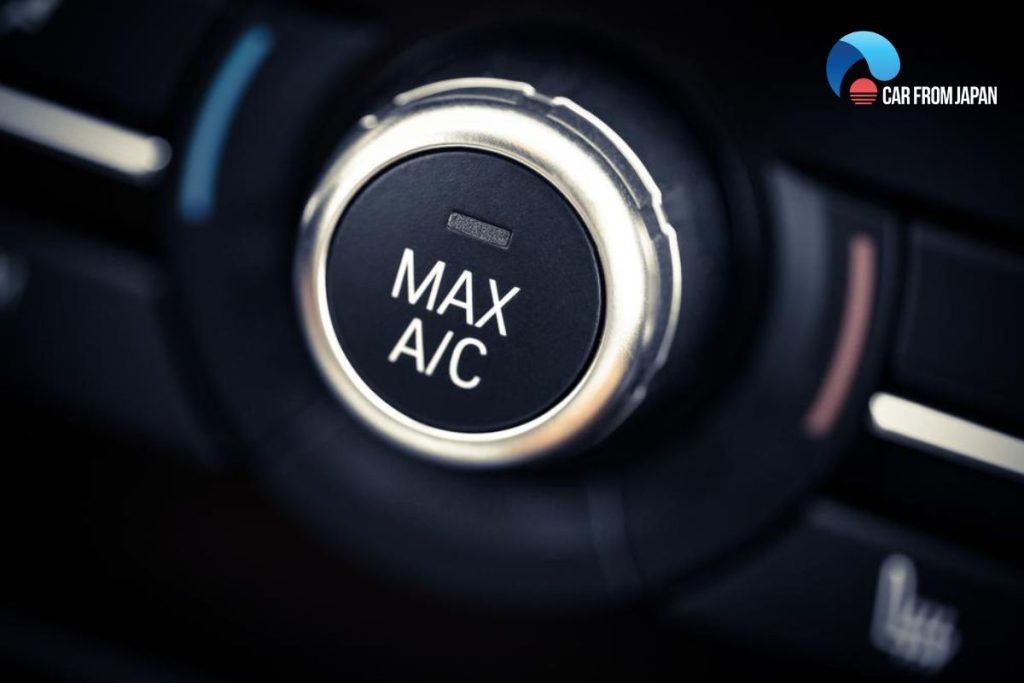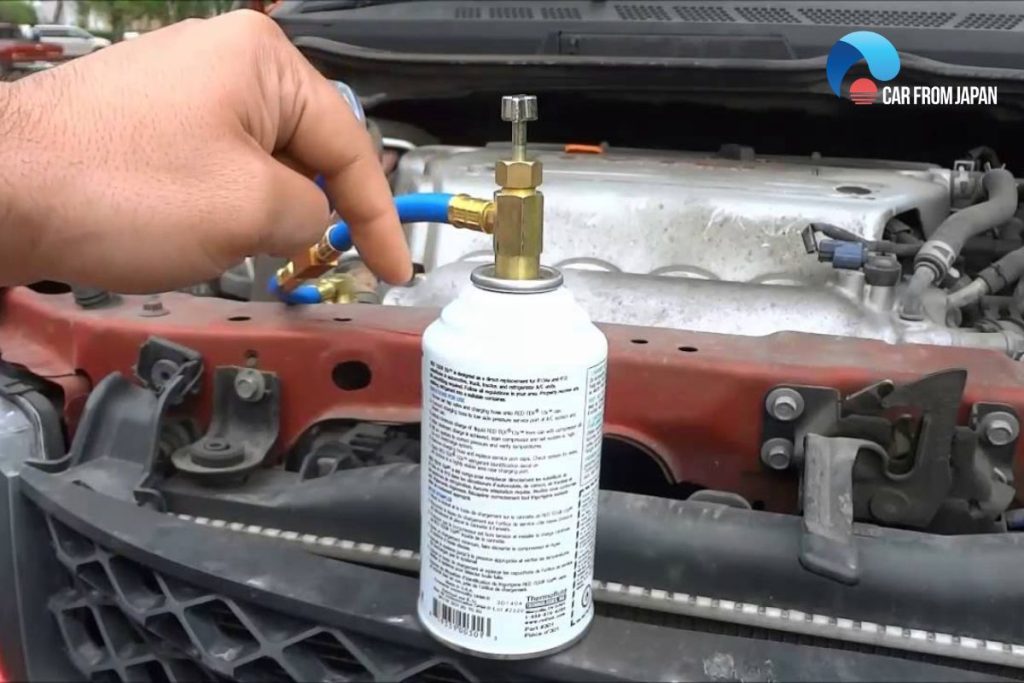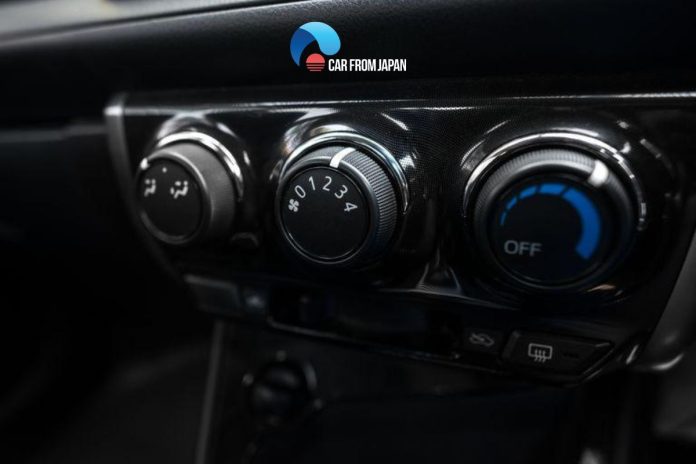An automobile can have numerous serious problems and a dysfunctional AC compressor clutch is one of them. When this component does not work properly, the engine does not get the cold air flow – leading to some major complications.
Knowing how to manually engage AC compressor clutch will help you skip a visit to the mechanic. Plus, you should also know how to examine the clutch to find out if it is faulty or not.
Contents
- What Is An AC Compressor Clutch?
- How To Examine The AC Compressor Clutch?
- How To Manually Engage AC Compressor Clutch?
- When and Why To Manually Engage the AC Compressor Clutch?
- FAQs on Engaging AC Compressor Clutch Manually
- How do I know if my AC clutch needs replacement or if it’s just an electrical issue?
- Is it safe to “hotwire” an AC compressor clutch directly to the battery?
- Is it safe to use a jumper wire to activate the AC compressor clutch?
- Will manually engaging the AC clutch bypass refrigerant-related problems?
- What tools can help make manual AC clutch engagement easier?
- Final Words
What Is An AC Compressor Clutch?
An air-conditioning unit in a car is made up of 5 main components: the compressor, condenser, expansion valve, evaporator, and receiver drier.
The compressor is located in the engine compartment and is belt-driven by the engine. And an AC compressor clutch is a device that allows the compressor to engage and disengage from the engine.
When the clutch is engaged, the compressor will turn on and start compressing the refrigerator. And when the compressor turns off, it also means that the clutch is disengaged.
In most cases, the AC compressor clutch is controlled by an electromagnetic coil. When current flows through the coil, it will create a magnetic field, it will pull the clutch plate toward the pulley.
The AC compressor clutch is a small part with the same size as a silver dollar and in most cars, this part is positioned at the front of the compressor.
How To Examine The AC Compressor Clutch?
Using low-quality oil could be a reason for failing AC compressor clutch but it could happen even if you use synthetic oil and high-quality coolant. In a few cases, the clutch does not engage due to a clogged refrigerant circuit.
If you want to diagnose an AC compressor clutch for defects, apply these techniques.
Working method 1
Set all air conditioning controls to the MAX before kicking off the engine. Check the front side of the clutch to examine its condition. Also, find out whether the clutch and the pulley are spinning.
If only the pulley is rotating, the compressor clutch is having an issue, which could be stemming from several sources – a blown fuse, bad clutch oil, low-pressure lockout, or an open wire in the oil.

Working method 2
Before starting the next step of diagnosis, you should know that a low-pressure switch can create problems with the compressor clutch’s relay in some car models.
The system’s computer keeps the relay grounded but it can go on and off due to the bad switch. A careful inspection of the system and its components will help you to pinpoint the source of trouble.
In this step, you have to detach the connector cable from the clutch oil. Keep it safe away from all other components. Use a digital voltmeter to measure the ground and voltage of the battery at the detached connector cable.
Go on to check the fuse if you cannot read the voltage readings. Move on to the clutch relay if the fuse turns out fine.
Working method 3
In a few car models, the power of the air conditioning system flows from the AC switch to the fuse before being transmitted to the clutch oil through the low-pressure evaporator temperature. You have to make sure that the compressor has enough oil to function properly.
When you are sure that there is a problem with the clutch, the next part is to engage it. The next section tells you how to manually engage AC compressor clutch at home.
Note that: Sometimes, your AC compressor clutch can get stuck, it’s usually caused by a lack of lubrication or a problem with an electromagnetic coil.
When the clutch is stuck, it will make the compressor not disengage from the pulley and the consequence will be the AC compressor stays on all the time and the refrigerant accumulates.
Read More: Want to Discharge Car AC at Home? Look into This!
How To Manually Engage AC Compressor Clutch?
Engaging the AC compressor clutch at home is not rocket science. There are a couple of ways you can fix the problem to bring back the air conditioning system in order.
Method 1: Add more coolant
What is the most common reason for an air conditioning compressor not to engage? Low level of refrigerant. When the coolant level in the system goes down, the low-pressure switch does not allow the compressor to rotate.
How to manually engage AC compressor clutch when the system is low on antifreeze? Easy! Just adding refrigerant will solve this problem.
If your car is compatible with the R134a type of refrigerant, attaching a can to the system will override the low-pressure switch and restore the normal function of the compressor clutch.
Tips – When you are going to manually engage the compressor, make sure that the system has enough oil. Inadequate lubrication can damage the compressor.

Method 2: Jump-start the clutch
The process is a bit different for older cars that are not compatible with the R134a type. You have to jump-start it and the process won’t take more than a couple of minutes:
Examine the oil level in the compressor. Add oil if the level is below the normal point. Check the owner’s manual to check the correct instructions for checking up the compressor oil and level and filling it up.
Unplug the single-wire connector on the front side of the compressor. Take the fused jumper wire and connect its one end to that side of the wire connector that was connected to the compressor.
Attach the other end of the jumper wire to the positive terminal of the battery. It will supply the battery voltage to the compressor clutch, allowing it to engage manually. There is no need to switch on the air conditioning system for this method to work.
Tips – You should route the jumper wire to avoid it getting tangled or interfering with other moving components.
Check out this video from Ratchets And Wrenches to visually learn more about adding freon to a car!
Method 3: Replacing the clutch
It is an ominous sign when the clutch engages but the compressor does not spin. Changing the compressor clutch could be the only solution in this case.
A bad AC compressor clutch needs immediate fixing. A delay can cause serious damage to the air conditioning system and the engine.
When and Why To Manually Engage the AC Compressor Clutch?
The main reason to manually engage your AC clutch is to test it. Think of it like a quick check to see if the clutch itself is working.
By powering it directly, you can figure out if the problem is the clutch or something else like wiring or a switch. If the clutch works when you manually engage it, you know the problem is somewhere else in the system.
Don’t use this trick as a permanent fix! Manually engaging the clutch is only for testing. Running your AC like this for a long time can damage the system or even be dangerous.
It’s like bypassing a safety switch, you might think you’re getting cool air, but you could be causing a bigger problem down the road.
So, after you’ve tested the clutch, disconnect everything and go back to the normal setup. If you found out the clutch is okay, take your car to a professional AC technician.
They can properly diagnose the real problem and fix it the right way, keeping you and your car safe.
FAQs on Engaging AC Compressor Clutch Manually
How do I know if my AC clutch needs replacement or if it’s just an electrical issue?
If manually engaging the clutch activates the compressor and cool air flows, the clutch itself may be fine.
Electrical issues like a bad relay, fuse, or wiring fault are more likely.
Is it safe to “hotwire” an AC compressor clutch directly to the battery?
It can be done for diagnostic purposes, but only briefly.
Long-term hotwiring can burn out the clutch coil or damage the compressor due to continuous operation without proper cycling.
Is it safe to use a jumper wire to activate the AC compressor clutch?
Using a properly rated jumper wire directly from the battery can be safe for short tests.
But you must be extremely careful to avoid short circuits, overloading the system, or damaging the clutch coil.
No, if refrigerant levels are too low, forcing the compressor to run can cause severe damage.
Manual engagement should only be used for short testing periods, not to override actual system faults.
What tools can help make manual AC clutch engagement easier?
A multimeter, jumper wires with inline fuses, and a 12V power probe tool can make it easier and safer to test and engage the clutch manually.
Final Words
Knowing how to manually engage AC compressor clutch is a useful diagnostic trick, but it’s not a fix.
It helps you pinpoint whether the clutch itself is the problem or if the issue lies elsewhere in your AC system. Remember, this is only a temporary test, not a long-term solution!
For more insightful Car maintenance tips, follow Car From Japan today!




I have just refilled my C202 AC……….now my fan turns on and off with some noise whenever i turn on the AC,what could be the problem.
I have an open coil. What’s your thoughts on grinding down the clutch plate so it’s always engaged to the pulley / always turns the compressor? I would leave it like that till the fall, then add a spacer or something so the clutch isn’t engaged.
The car is a 2010 honda civic with 150K miles and has banged up bumper. So it’s worth maybe $2.5K? or $3K at most? So replacing compressor, which any garage I spoke to would do – they don’t want to replace parts on the compressor like coil… not worth their time? Afraid if there’s other issues, I’ll blame them…
So I could do the clutch removal, grinding and replace. I’d leave the AC siwtch on all the time. Any downside? Bad for the car to start with compressor on? (too much load on the engine?). I don’t want to break something else (hence me not thinking I could do the coil replace successfully!)
Just hotwire it with paperclip plugged into both ends of the ac compressor clutch switch that usually plugs into the accumulator.
The Compressor is not meant to run all the time. That is why the clutch assembly is necessary. The computer can turn it on when needed, then off when it has done its job.